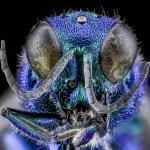hippocampus
A recent article published in the American Journal of Physiology reviewed how the brain regulates feeding behaviors. Humans are not the only species to eat food in spurts we like to call meals. Research suggests that this behavior may actually aid survival as it reduces exposure time to the environment and makes responding to fluctuations in the availability of food a bit easier to deal with. Dr. Marise Parent and colleagues at Georgia State University wanted to find out how your body determines when to initiate eating as well as how long the interval between meals should be.…
Perovskite solar cells can not only emit light, they can also emit up to 70% of absorbed sunlight as lasers.
Critical signaling molecules can be used to convert stem cells to neural progenitor cells, increasing the yield of healthy motor neurons and decreasing the time required to grow them.
Mexican blind cavefish are so close to their sighted kin that they are considered the same species, but they use pressure waves (from opening and closing their mouths) to navigate in the dark.
Electrostatic assembly allows luminescent elements (like Europium) to be embedded in nanodiamonds; these glowing…
THE human gut contains a diverse community of bacteria which colonize the large intestine in the days following birth and vastly outnumber our own cells. These intestinal microflora constitute a virtual organ within an organ and influence many bodily functions. Among other things, they aid in the uptake and metabolism of nutrients, modulate the inflammatory response to infection, and protect the gut from other, harmful micro-organisms. A new study by researchers at McMaster University in Hamilton, Ontario now suggests that gut bacteria may also influence behaviour and cognitive processes such…
SUZANNE Corkin is a professor of behavioural neuroscience at the Massachusetts Institute of Technology who worked with the famous amnesic patient H.M. for more than 45 years. I interviewed her at the annual meeting of the Society for Neuroscience in San Diego last month, for this article I wrote for The Dana Foundation. We talked about her work with H.M., and about the project to examine his brain now that he has died, which was partly funded by Dana. The transcript of our conversation is below.
How long did you work with H.M.? Did he ever know who you were? What was he like?
I…
FORMATION of a memory is widely believed to leave a 'trace' in the brain - a fleeting pattern of electrical activity which strengthens the connections within a widely distributed network of neurons, and which re-emerges when the memory is recalled. The concept of the memory trace was first proposed nearly a century ago, but the nature of the trace, its precise location in the brain and the underlying neural mechanisms all remain elusive. Researchers from University College London now report that functional magnetic resonance (fMRI) can be used to decode individual memory traces and to predict…
MEMORY is one of the biggest enduring mysteries of modern neuroscience, and has perhaps been researched more intensively than any other aspect of brain function. The past few decades have yielded a great deal of knowledge about the cellular and molecular mechanisms of memory, and it is now widely believed that memories are formed as a result of biochemical changes which ultimately lead to the strengthening of connections between nerve cells.
It is, however, also clear that memories are not encoded at the level of single neurons. Instead, the memory trace is thought of as a flurry of…
USING an inventive new method in which mice run through a virtual reality environment based on the video game Quake, researchers from Princeton University have made the first direct measurements of the cellular activity associated with spatial navigation. The method will allow for investigations of the neural circuitry underlying navigation, and should lead to a better understanding of how spatial information is encoded at the cellular level.
In mice, spatial navigation involves at least four different cell types located in the hippocampus and surrounding regions. Place cells…
THIS short film clip shows two images of the same scene. Watch it carefully, and see if you can spot the subtle differences between them. As you watch, your eyes will dart back and forth across the images, so that you can perceive the most important features. And even though you might not be consciously aware of the differences, your brain will have picked up on them. This implicit form of remembering is referred to as relational memory; in this case, the brain is encoding the perceptual associations between items in the image. And recent studies have shown that relational…
I know this will be of interesting for about 1 in a hundred of you, but there is a REALLY good review of hippocampal and parahippocampal region connectivity in April's Nature Review Neuroscience. Of special interest, there is an interactive .pdf in the supplementary information where you can identify the connections between one region to every other region. Also, they discuss the functions of the entorhinal cortex and the subiculum from the point of view of update anatomy.
(Unfortunately behind a subscription wall, but I feel confident that anyone who understood a word of what I just said…
